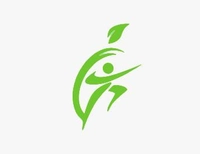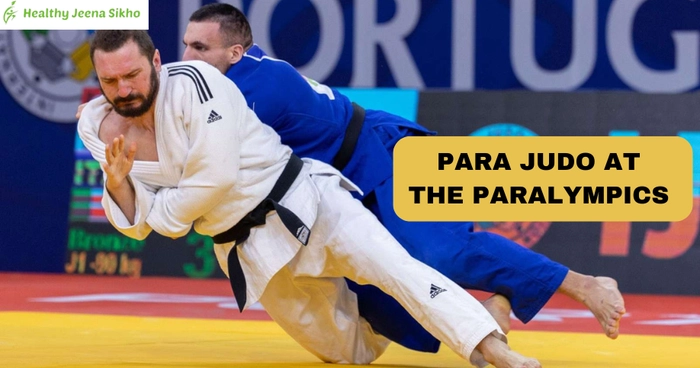|
Para Judo is a sport that combines the discipline and physicality of traditional judo with the resilience of athletes with visual impairments. As one of the most engaging sports in the Paralympics, it requires tremendous strength, balance, and mental focus. India has made notable strides in Para Judo, with the 2024 Paris Paralympics marking a historic achievement for the country. In this blog, we’ll explore what Para Judo is, how India performed, the rules of the sport, and the Indian athletes who have represented the nation on the global stage. What is Para Judo?Para Judo is a variation of judo for athletes with visual impairments. Like its Olympic counterpart, Para Judo involves grappling, throws, holds, and joint locks, but with adaptations to accommodate the athletes’ vision limitations. Introduced into the Paralympics in 1988 for men and in 2004 for women, it has grown in popularity and competitive intensity. Judo itself is a Japanese martial art, meaning "the gentle way," and focuses on using the opponent’s force against them. For Para Judo athletes, the emphasis remains on balance, technique, and leverage, making it a highly strategic sport. How India Performed in Para Judo: Paris 2024India made history at the 2024 Paris Paralympics with Kapil Parmar clinching India’s first-ever medal in Para Judo. This achievement is a significant milestone, showcasing India’s growing presence in Paralympic sports. Parmar’s performance was remarkable, highlighting the perseverance and determination of Indian athletes who often face resource and training challenges. - Kapil Parmar's Achievement: Kapil Parmar secured a bronze medal in the -60kg category, marking India's first Paralympic medal in judo. This success reflects not only his individual talent but also the growing focus on supporting Para Judo athletes in India. Parmar's achievement is a sign of progress for Indian Para Judo, which has not always enjoyed as much attention as other Paralympic sports. His dedication and triumph serve as an inspiration to aspiring judo athletes with disabilities across the country. Indian Athletes in Para Judo While Kapil Parmar’s recent success has brought Para Judo into the spotlight, other Indian athletes have also contributed to the sport’s development in the country. These athletes have worked hard to compete on the international stage despite limited support. - Kapil Parmar: Parmar's journey to the Paralympics is a story of determination and resilience. His bronze at the Paris Paralympics is a reflection of years of hard work and dedication to the sport. - Other Emerging Athletes: As interest in Para Judo grows in India, more athletes are likely to follow in Parmar’s footsteps, with increased focus on training programs, infrastructure, and support for visually impaired judokas. The Rules of Para JudoWhile Para Judo follows the fundamental rules of traditional judo, there are key adaptations to accommodate the needs of visually impaired athletes. 1. Visual Impairment Classification: Athletes in Para Judo are classified into three categories based on their level of vision: - B1: Totally blind or no light perception. - B2: Very limited vision (up to 2/60 visual acuity). - B3: Better vision than B2, but still classified as visually impaired (up to 6/60 visual acuity). 2. Grip and Contact: One of the most significant differences in Para Judo is that athletes start the match in a gripping position. This eliminates the need for visually impaired athletes to search for their opponent, creating a more balanced starting point. 3. Throws and Techniques: The goal of Para Judo is to throw the opponent onto their back or pin them to the mat. The techniques and strategies used are the same as in traditional judo, with an emphasis on using leverage and balance to defeat the opponent. 4. Judging and Scoring: Similar to traditional judo, scoring is based on the effectiveness of throws, pins, and holds. Points are awarded for successful moves, and an ippon, or full point, is awarded when a competitor executes a perfect throw or hold, ending the match immediately. 5. Match Duration: Para Judo matches last four minutes, with the clock stopping when the referee calls for a break or a pause in the match. 6. Safety Adaptations: Given the nature of visual impairments, safety is paramount in Para Judo. Referees and coaches are specially trained to ensure that matches are conducted safely and that athletes can hear instructions clearly during the competition. Challenges and Opportunities for Indian Para Judo While India’s success in Para Judo is a cause for celebration, the sport still faces several challenges in the country. These include limited access to training facilities, lack of visibility for Para Judo in mainstream media, and insufficient support for athletes with disabilities. - Training and Infrastructure: Many Para Judo athletes in India lack access to the kind of training facilities and coaching staff that are available to their counterparts in other countries. However, recent successes like Kapil Parmar’s bronze medal could lead to more investment in infrastructure and resources for the sport.
- Funding and Sponsorship: Securing sponsorship for Para sports in India remains a challenge. Increased awareness and achievements on the global stage can attract more sponsors, leading to better support for athletes. The Future of Para Judo in IndiaKapil Parmar’s historic win at the 2024 Paris Paralympics has the potential to inspire a new generation of Para Judo athletes in India. With increased awareness, better support from government and private sponsors, and the growing visibility of Para sports, India could see more athletes competing at the highest level in Para Judo in future Paralympics. Key Steps Forward: - Increased Training Programs: The establishment of national and regional training centers for Para Judo will provide upcoming athletes with the support they need to excel. - Enhanced Media Coverage: Greater visibility for Para sports, including Para Judo, in mainstream media will inspire more athletes to pursue the sport and attract sponsors. - Inclusion and Accessibility: Promoting greater inclusion of disabled athletes in mainstream sports training programs and ensuring they have access to high-quality coaching will further the development of Para Judo in India. ConclusionPara Judo is a testament to the resilience, strength, and determination of athletes with visual impairments. With India’s breakthrough moment at the 2024 Paris Paralympics, led by Kapil Parmar’s bronze medal, the future of Para Judo in the country looks bright. As awareness and support for Para sports continue to grow, we can expect to see more Indian athletes competing and excelling on the global stage. By embracing the challenges and building on the success of its athletes, India has the potential to become a strong contender in Para Judo, paving the way for future Paralympic glory. |

